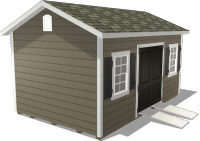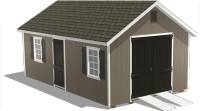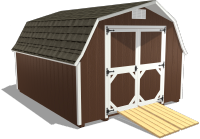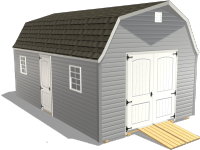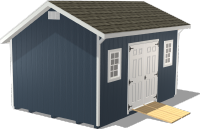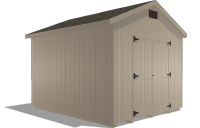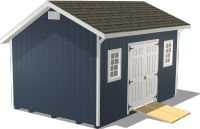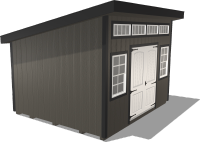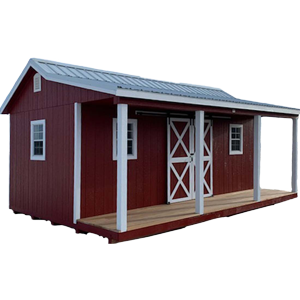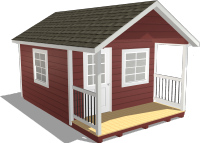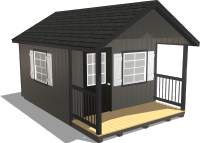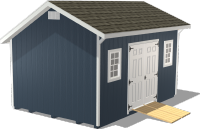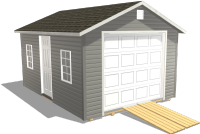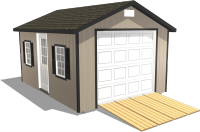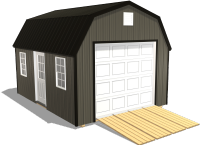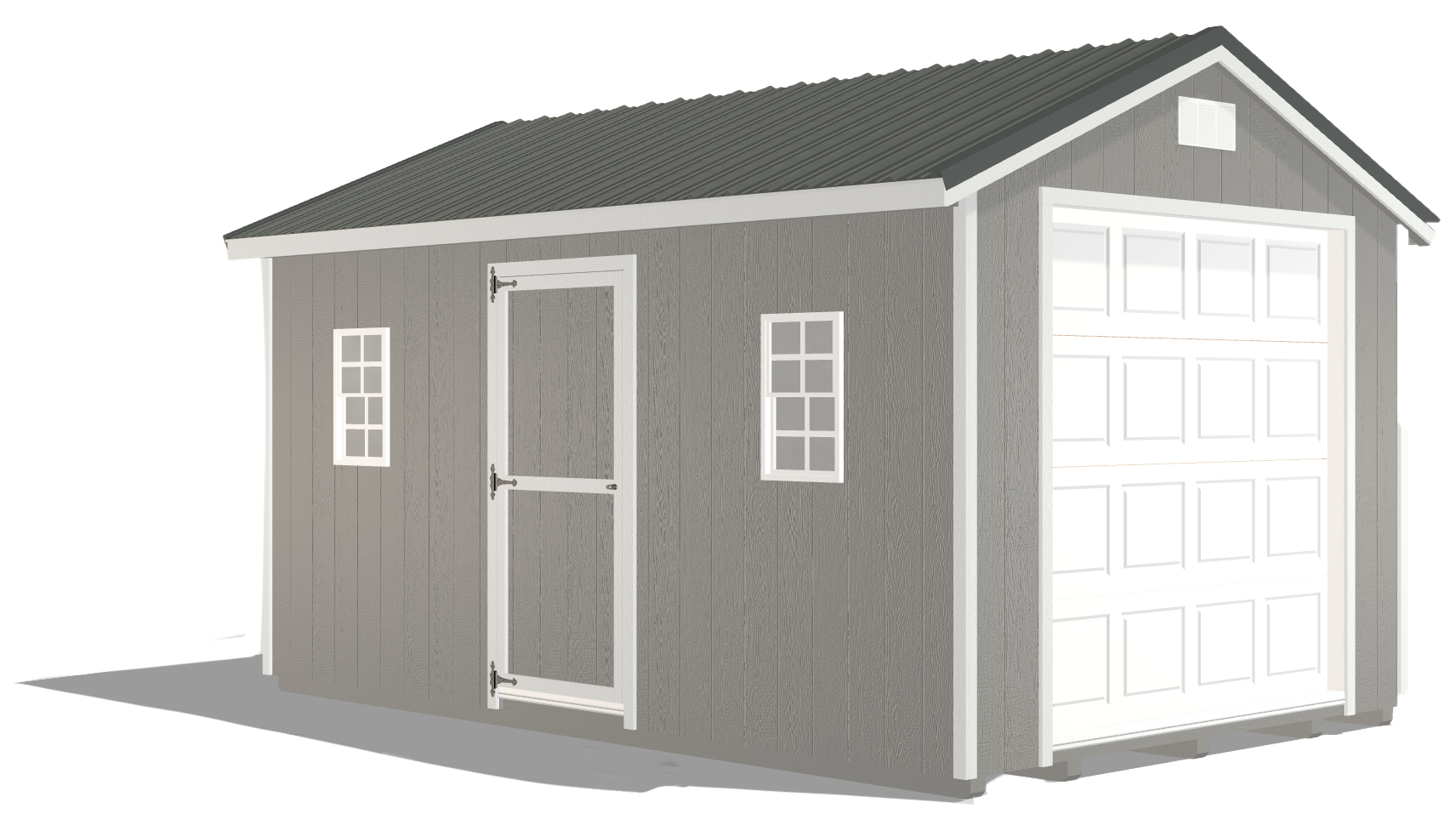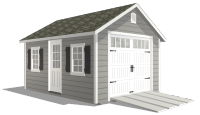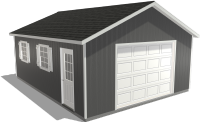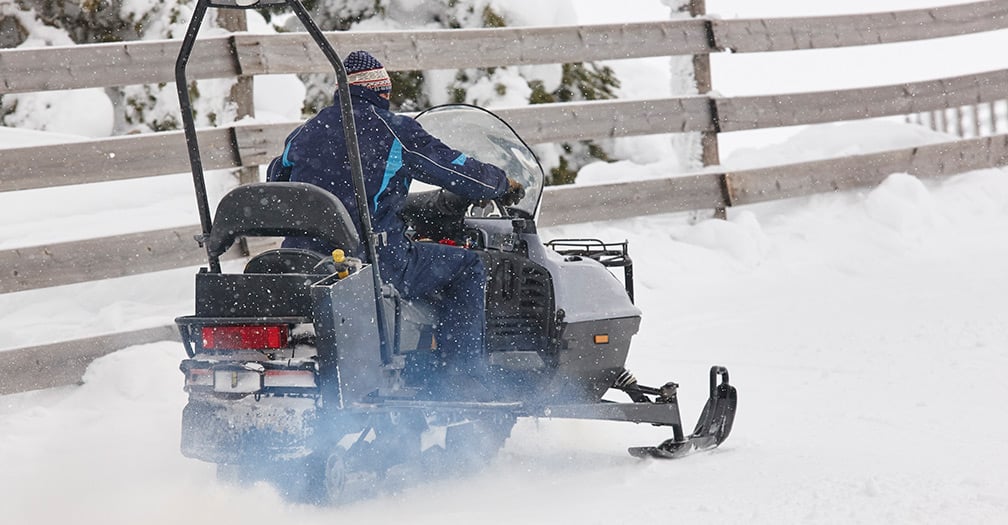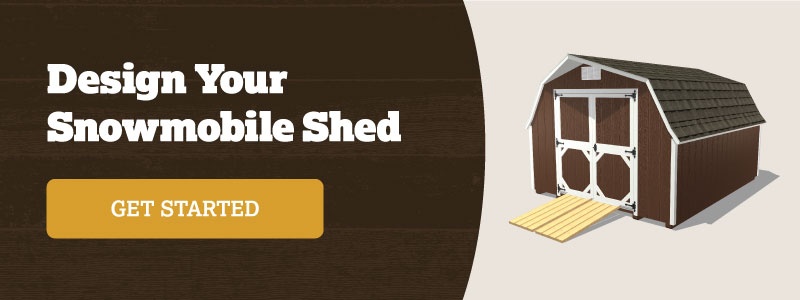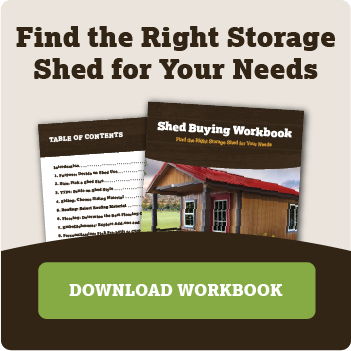Snowmobile Cleaning Tips & Snowmobile Shed Storage Ideas
by Dakota Storage Buildings, on March 25, 2020
Discover tips for cleaning and storing your snowmobile.
We're nearing the end of winter, but we hope you've had plenty of chances to enjoy your snowmobile. With spring around the corner, you'll soon need to store it for the rest of the year.
Some owners let their snowmobiles coast to a stop at the end of the riding season. And there they sit for the rest of the year, outside and unprotected from the elements.
When this happens, fuel hoses harden, seat fabrics crack, rust forms on internal engine components, and corrosion forms in the rear suspension. Decals crack and peel, and the shiny finish on the tunnel slowly becomes dull. Snowmobiles deserve better.
In this post, we'll cover snowmobile basics and storage ideas that will keep your snow vehicle in great shape during the off-season and ready to go next winter.
Snowmobile Basics
Did you know that in 2018 there were 124,786 snowmobiles sold worldwide — 53,179 of them were sold in the United States. Of these snowmobiles, most were manufactured by Textron/Arctic Cat, BRP, Polaris Industries, and Yamaha Motor Corporation.
Each rider has a preference as to which company builds the best snowmobile. Which do you prefer?
Check out these cool facts taken from snowmobile.org:
- The average snowmobiler rides their snowmobile 1,250 miles per year in North America.
- The average snowmobiler spends $2,000 each year on snowmobile-related recreation.
- 49% of snowmobilers trailer their snowmobiles to ride.
- There are 3,000+ snowmobile clubs worldwide, involved in trail grooming, charity fundraising, & family activities.
- Snowmobiling is an invigorating sport that's great for stress release and maintaining mental health.
Which type of snowmobile do you ride? There are seven different types:
- Trail: This is the most basic type of snowmobile and is often used for commuting and transportation.
- Touring: These are designed to carry a passenger as well as the driver, so they usually come with an extra seat (known as a “2-up”).
- Performance: These have very powerful engines with high displacement capacity. They are tuned for maximum speed and acceleration. Professional riders and those who love the thrill of speed often purchase this type of snowmobile.
- Utility: Just as their name implies, these snowmobiles are used to work in fields and haul goods. They often have a hitch for towing sleds.
- Crossover: These are designed to run well over groomed trails as well as off-trail. They have a longer hybrid track and medium-sized lugs (about 1.25”).
- Mountain: These snowmobiles are designed specifically to provide enough force to climb mountain slopes. They also tend to have narrower bodies than other snowmobiles in order to maneuver on tight trails.
- Youth: These machines are designed for youth learning how to ride a snowmobile. These snowmobiles have limited power in their engines, helping younger people stay safe.
From high-performance to easy-riding, there’s a snowmobile for every need and want.
Things to Consider When Choosing a Snowmobile Storage Shed
The shed size you choose depends on the size of your snowmobile, whether or not you need to store a snowmobile trailer, workspace if you plan to do maintenance inside the shed, and storage space for whether anything else you might want to keep in the shed.
Here are key questions to ask yourself before settling on a shed size:
- What are the measurements of your snowmobile? It's better to measure dimensions than eye-ball them. For example, a Polaris Trail Series snowmobile likely won't need as much room as the brand's larger Mountain Series models — BUT be sure to measure. Don't guesstimate.
- How much space do you need for a snowmobile trailer or snowmobile storage rack?
- Do you plan to work on your snowmobile inside the shed? If so, how much extra room will you need?
- Will you be storing anything else in the shed in addition to your snowmobile?
If you plan to work on your snowmobile inside the shed, it will need to be large enough for your snowmobile and for you to work on and around it comfortably.
How much room is that, you ask?
Well, let’s say you plan to use the shed for storage only. Let’s also say you have two trail snowmobiles to store. A standard 10’x10’ shed should be fine. If you want to have more room for storing additional snowmobile equipment (small trailer, shelving for helmets and suits, etc.) a 12’x20’ shed should work.
If you plan to work on the two machines either in-season or off-season, a 12’x28’ structure should be more than enough for storage while providing plenty of room for you to move about as you do maintenance and make repairs.
If you plan to work for long stretches of time inside the shed, consider adding insulation and multiple electrical outlets.
Finally, don’t forget to outfit your shed for the work you plan to do on your snowmobile, and ensure that the structure can handle your snowmobile.
For instance:
- Strong flooring - Strong flooring will hold the weight of everything you put in it, including repair machinery, the snowmobile itself, tools, your weight (and any friends you bring in to help), and anything else you plan to store inside.
- Moisture-resistant flooring - The floor should be able to withstand moisture, mud, snow, rain, etc., and it shouldn’t warp when it’s wet.
- Overhead garage door - While larger sheds tend to come with an overhead garage door, you can add one to any size shed. In addition to an overhead garage-style door, the ramp — whether wooden or aluminum — should be able to hold the weight of your snowmobile.
- Storage cabinets and shelves - Having storage shelves for your equipment and riding gear and a snowmobile storage rack is ideal. You can buy shelving units or have them custom built to fit like a glove inside your shed.
Getting Your Snowmobile Ready For Storage
Making sure your snowmobile is cleaned, prepped, and properly stored for the off-season is the best thing you can do to lengthen the life of your snowmobile. Here are six steps you’ll need to do to get your snowmobile ready for it’s long “nap.”
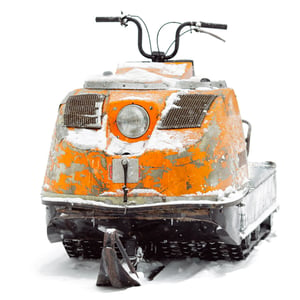 The gas tank. Add fuel stabilizer to the tank so that the gasoline won’t “go bad” or evaporate over the spring/summer/fall. Once you’ve added the stabilizer, slosh it around in the tank and then run the snowmobile’s engine for a few minutes so that the mixture can run through the fuel line. Once done, drain excess gas from the carburetor and turn the fuel off (this will prevent the gasoline from damaging gaskets).
The gas tank. Add fuel stabilizer to the tank so that the gasoline won’t “go bad” or evaporate over the spring/summer/fall. Once you’ve added the stabilizer, slosh it around in the tank and then run the snowmobile’s engine for a few minutes so that the mixture can run through the fuel line. Once done, drain excess gas from the carburetor and turn the fuel off (this will prevent the gasoline from damaging gaskets).- Lubricate it. Grease the vehicle’s fittings on its steering system and suspension. Doing so helps prevent rust.
- Engine fogging. Turn the engine on and run it slightly above idle. Then spray some fogging oil into each of its intakes. Switch back and forth from cylinder to cylinder for about a minute or so, making sure to keep spraying to ensure all internal parts get enough oil.
- Remove the battery. While this may not be absolutely necessary, it’s a good idea to remove the battery and then place it in a dry spot (such as a storage closet). Attach a trickle charger to it (of no more than .5 amps).
- Protect it. A snowmobile’s chassis can corrode over the months it’s in storage, so wash it well and clean any snow, mud, and debris from it. Then use WD40 to spray any moisture off the metal. (When you take it out of storage next late-fall or early-winter, clean off the WD40 with a light degreaser.)
- Store it. Store your snowmobile in a dry place like a shed. Place it under a soft cover (which is better than tarp because a tarp can trap moisture underneath it). Jack up the snowmobile’s rear end so that you remove tension off its track lugs and suspension. (Placing the chassis on top of a milk crate or something similar lets the suspension hang easily and keeps the lug tips from folding over.) It’s also a good idea to place a few mothballs underneath the chassis so that mice and other critters won’t make a home in the air box or eat the foam under the hood.
Own a Top-of-the-line Shed for Your Snowmobile
What’s the best way to protect your snowmobile all year long? In addition to preparing it for winter and covering it with a cloth, it should ultimately be stored in a dry, durable storage shed.
To find the right storage shed for all of your snowmobile needs, check out our Shed Collection. In our Shed Collection, you’ll find great options like the Backyard Shed XL. Backyard Shed XL features a built-in loft, built-in workbench, VersaCaddy Storage Kit, and LP ProStruct® Roof & Wall Sheathing with SilverTech®. Add on an overhead garage door, and you're set!
If you want to customize a shed, use our online 3D configuration tool to design your ideal snowmobile shed from top to bottom.



